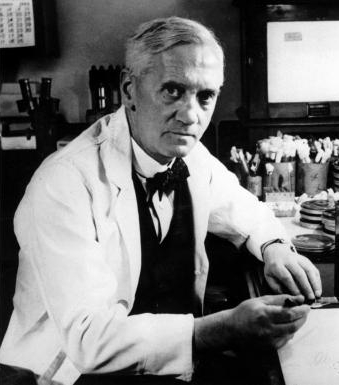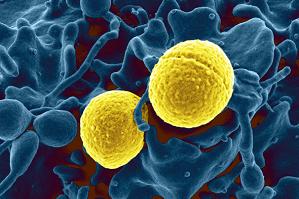Imagine a world where the common cold or a cut on your finger could be potentially life threatening. Operations, transplants and even child birth could once again be deadly. This nightmarish situation might not be as far fetched as some might think. The World Health Organization warns us of such a future – one without antibiotics.
Sir Alexander Fleming‘s discovery of antibiotics was one of the single greatest contributions to medicine. He’d made the discovery of penicillin in 1945, but even then the awareness of bacterial resistance to the drug was present. Sir Alexander Fleming stated:
“It is not difficult to make microbes resistant to penicillin in the laboratory by exposing them to concentrations not sufficient to kill them, and the same thing has occasionally happened in the body.
Then there is the danger that the ignorant man may easily underdose himself and by exposing his microbes to non-lethal quantities of the drug make them resistant.”

Sir Alexander Fleming.
Source: Wikimedia Commons via Calibuon
The resistance that Sir Alexander Fleming mentioned is materializing into a harsh reality of today. As bacteria become exposed to different drugs, they eventually adapt and find ways to survive, rendering the drug ineffective. The US Centers of Disease Control point out the emergence of “nightmare bacteria,” those that are capable of resisting multiple drugs, as well as a select few that are immune to all antibiotics. For the most part, as long as new and improved drugs are developed, resistance to the majority of bacteria will not be a problem. However, there has not been a discovery of a new class of antibiotics since 1980.

Scanning electron micrograph of Staphylococcus aureus bacteria (gold) outside a white blood cell (blue).
Source: Wikimedia commons via NIAID/NIH
Although antibiotics are the main cause of the adaptation and development of more resistant strains of bacteria, a world without antibiotics would be far more dangerous. Antibiotics are extremely important in compensating for a suppressed immune system resulting from major surgeries or long term treatments such as chemotherapy. A future without antibiotics is surely a grim one.
Some initiatives have already been taken in order to decrease the amount of unnecessary use of antibiotics. Europe, for example, has banned the use of antibiotics to increase the growth of livestock, as it can promote resistance in bacteria. It has also been argued that antibiotics should be far more expensive, forcing people to reassess how badly they need them.
Professor Laura Piddock, from the Institute of Microbiology and Infection at the University of Birmingham, talks about the importance of using antibiotics carefully:

Source: YouTube via pharmamixvideo
The speculation of a future without antibiotics forces us to rethink our casual use of the drug. Although the description of such a situation may seem a little over exaggerated, the message should be taken seriously or dire consequences may ensue. While bacterial resistance to antibiotics is increasing, careful regulation of its use could prevent this “bacterial apocalypse” that is so vividly described.
– Curtis Ma





